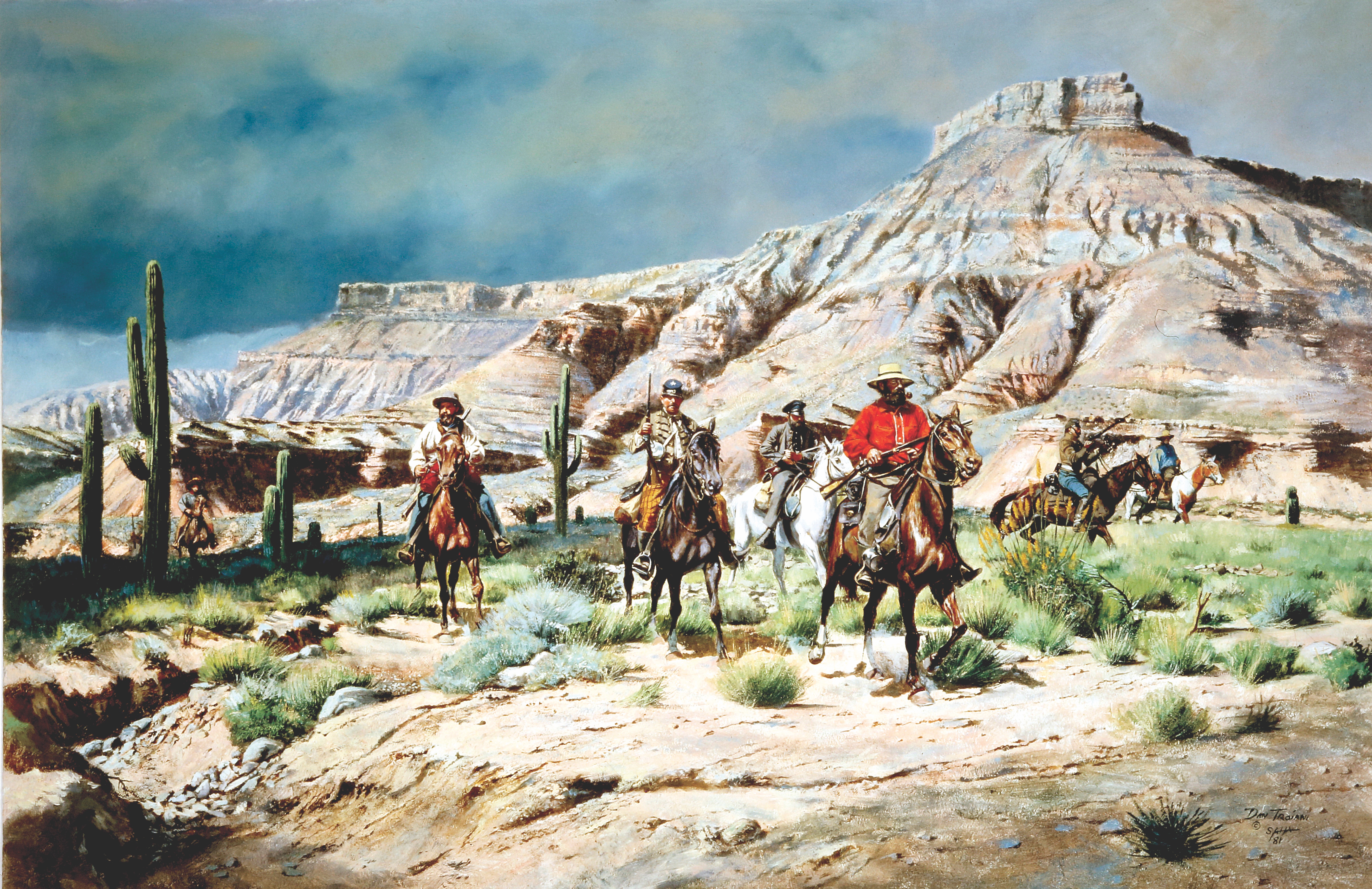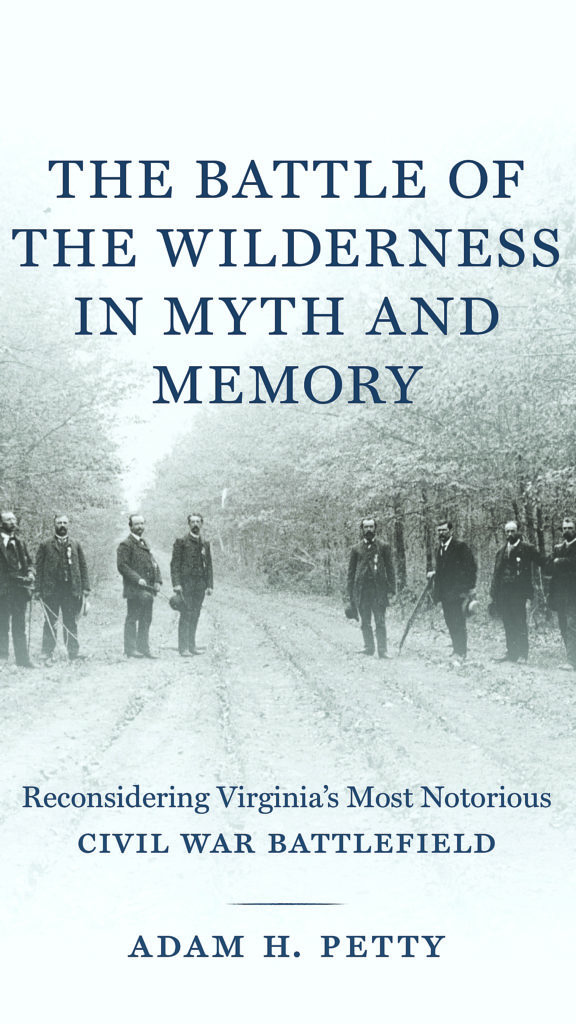In antebellum Americans possessed boundless ambition. Although divided over slavery, Northerners and Southerners agreed that the country’s future lay west. Composing more than 40 percent of the United States’ landmass, western lands contained vast natural resources. With the outbreak of the Civil War, Union and Confederate leadership looked to conquer and colonize the West. Historian Megan Kate Nelson narrates the story of that fight in her ambitious work, The Three-Cornered War: The Union, the Confederacy, and Native Peoples in the Fight for the West.
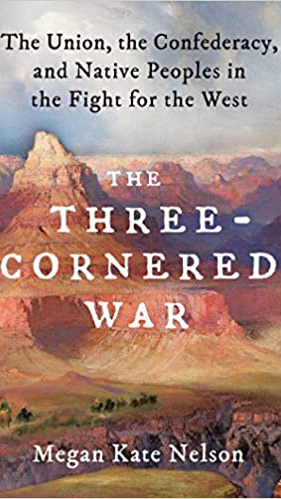
the Confederacy, and Native Peoples
in the Fight for the West
By Megan Kate Nelson
Scribner, 2020, $28
Chronologically driven, the narrative spans from the antebellum era through the early 1880s. Ranging beyond the 100th meridian, the book’s sprawling geography is its major contribution. Composed of three parts, the work maintains a brisk pace across 22 chapters. Each chapter is framed through the experiences of one figure, including a Texas politician, a Union army wife, a Navajo weaver, a Union soldier, and an Apache chief, or a place such as Valverde and Glorieta. Nelson’s original approach structures the narrative. The book’s elegance comes from the thoughtful manner in which she knits together the disparate stories.
It was a war of firsts. Multiracial, if not integrated, armies composed of Anglos, indigenous peoples, and Hispanos fought across an unforgiving environment. Texan John Baylor led the first successful Confederate invasion of Union territory. The longest Confederate march to date in early 1862 occurred along the rugged San Antonio-El Paso Road. And when white Southerners raised their flag in Santa Fe, it became the first and only capital city under Confederate control in Union territory.
The New Mexico Territory drew Confederates’ attention because it served as a key thoroughfare “to access the gold in the mountains of the West and California’s deep-water ports.” The mines and trade would underpin white Southerners’ future campaigns of conquest. The Confederates met early success and through proclamation stretched their new nation from the Atlantic to California. As war raged across Native homelands, Apaches and Navajos used military campaigns to gain resources vital to the recapture of lands lost during the antebellum era. They made peace treaties, raided military forts, and traded with Anglos as opportunity arose.
Nelson maintains that the summer of 1862 proved a watershed moment in the West. With military defeats, Confederates “put their dream of a continental empire of slavery on hold and focused all of their attention on winning the war in the East.” Yet the West continued to drive policy in the East. Federals turned their attention from Confederates to the expansion of empire. The Lincoln administration approved reservations and pushed for railroads. By the late 1860s, hundreds of thousands of Anglos had spread west and transportation networks, fully realized by the 1880s, tied the Atlantic to the Pacific by railroad.
Subtly argued and richly documented, The Three-Cornered War reveals “how the imagined future of the West shaped the Civil War, and how the Civil War became a defining moment in the West.”—James T. Broomall
[hr]
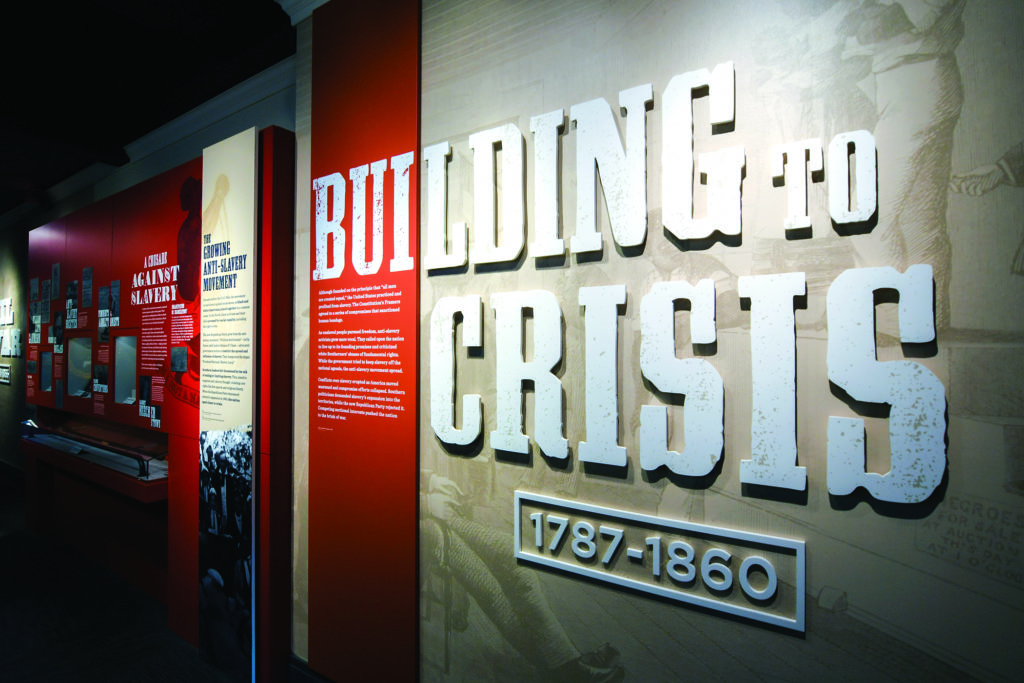 The new permanent exhibit at Philadelphia’s National Constitution Center, Civil War and Reconstruction: The Battle for Freedom and Equality, spans more than 100 years of history as it explores how constitutional clashes over slavery set the stage for the war and how the nation transformed after it. The exhibit is broken up into three main time periods: Building to Crises (1787-1860), Civil War (1861-1865), and Reconstruction (1865-1877). Visitors move chronologically through the displays and follow along as the anti-slavery movement gains momentum, states secede, and tensions erupt into war. ¶ More than 100 artifacts are showcased to help bring these periods to life, including significant documents such as Dred Scott’s petition for freedom, a first edition of Uncle Tom’s Cabin, and the telegram announcing the surrender of Fort Sumter in 1861. ¶ Where the exhibit shines, though, is its focus on the personal impact of the war and its aftermath. Reconstruction takes center stage as a period during which newly emancipated slaves struggled to establish the rights to marry, obtain an education, and vote in states that fought to maintain white supremacy by implementing laws that disenfranchised African Americans and limited their personal freedoms. ¶ The exhibit’s collection includes a wide variety of personal artifacts that help illustrate how these tensions permeated every corner of Americans’ daily lives, including The Anti-Slavery Alphabet children’s book, a family board game about secession, a “Colored” voters box, and a Poll Tax receipt. Digital consoles also allow visitors to experience the war and its aftermath in interactive ways, including hearing directly from formerly enslaved individuals who were interviewed in the early 1900s. ¶ In one of its final displays, the exhibit showcases more modern struggles in the 20th and 21st century. Viewers learn about the reemergence of the Ku Klux Klan and the Civil Rights movement, a reminder that the fight for equality is still not over. ¶ The museum, located at 525 Arch Street, is open 9:30 a.m. to 5 p.m. Monday through Saturday and Noon to 5 p.m. on Sundays.—Heather Hacker
The new permanent exhibit at Philadelphia’s National Constitution Center, Civil War and Reconstruction: The Battle for Freedom and Equality, spans more than 100 years of history as it explores how constitutional clashes over slavery set the stage for the war and how the nation transformed after it. The exhibit is broken up into three main time periods: Building to Crises (1787-1860), Civil War (1861-1865), and Reconstruction (1865-1877). Visitors move chronologically through the displays and follow along as the anti-slavery movement gains momentum, states secede, and tensions erupt into war. ¶ More than 100 artifacts are showcased to help bring these periods to life, including significant documents such as Dred Scott’s petition for freedom, a first edition of Uncle Tom’s Cabin, and the telegram announcing the surrender of Fort Sumter in 1861. ¶ Where the exhibit shines, though, is its focus on the personal impact of the war and its aftermath. Reconstruction takes center stage as a period during which newly emancipated slaves struggled to establish the rights to marry, obtain an education, and vote in states that fought to maintain white supremacy by implementing laws that disenfranchised African Americans and limited their personal freedoms. ¶ The exhibit’s collection includes a wide variety of personal artifacts that help illustrate how these tensions permeated every corner of Americans’ daily lives, including The Anti-Slavery Alphabet children’s book, a family board game about secession, a “Colored” voters box, and a Poll Tax receipt. Digital consoles also allow visitors to experience the war and its aftermath in interactive ways, including hearing directly from formerly enslaved individuals who were interviewed in the early 1900s. ¶ In one of its final displays, the exhibit showcases more modern struggles in the 20th and 21st century. Viewers learn about the reemergence of the Ku Klux Klan and the Civil Rights movement, a reminder that the fight for equality is still not over. ¶ The museum, located at 525 Arch Street, is open 9:30 a.m. to 5 p.m. Monday through Saturday and Noon to 5 p.m. on Sundays.—Heather Hacker
[hr]
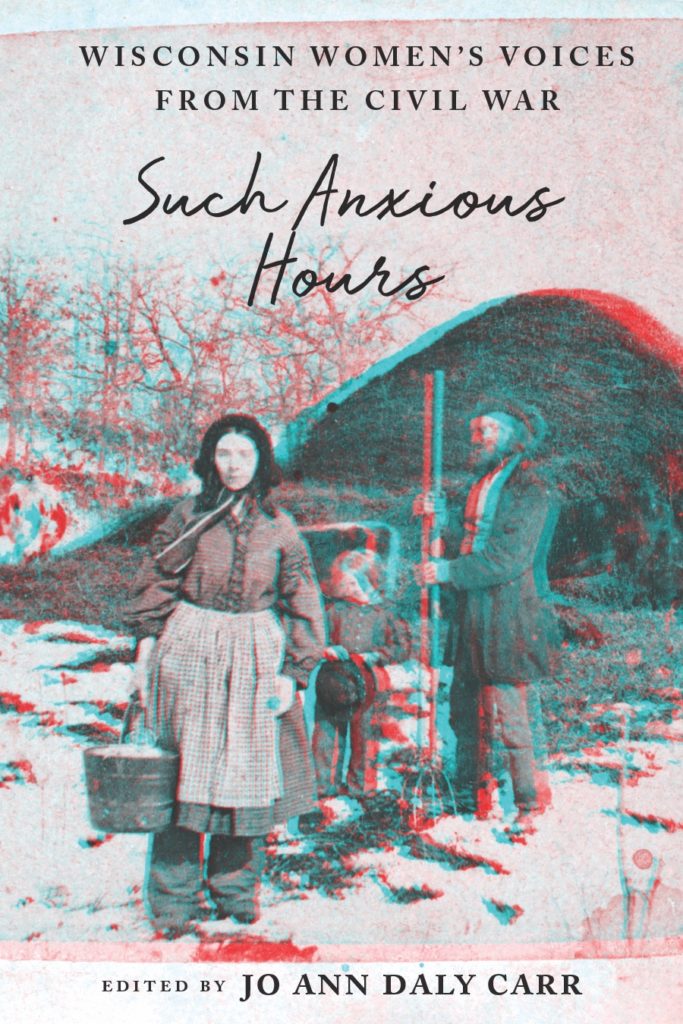
Edited by Jo Ann Daly Carr
University of Wisconsin Press, 2020, $34.95
While the voices of soldiers from the warfront have enjoyed a vast and eager audience in the form of published letters and diaries, the writings of the women they left back home have been largely overlooked, buried in archives and attics. Editor Jo Ann Daly Carr has brought their words to light in her new book Such Anxious Hours: Wisconsin Women’s Voices From The Civil War. Using letters and diary entries from eight Wisconsin women, Carr paints a poignant and expansive portrait of life on the home front, including from women who worked to support the war effort and those struggling to stay afoot while their husbands, sons, and brothers served on the front lines.
“There were ten sewing machines in operation,” writes 21-year old Emily Quiner in her diary on May 4, 1861, recording an entry about how
she and several other women worked on shirts for soldiers that day. “There were a great many present this afternoon and we accomplished a good deal….We met again in the evening, and altogether finished about thirteen dozen today.”
Meanwhile, Margaret Patchin has little time to write, but tries to accomodate her husband’s desire for news from home, albeit frustratingly, “You seen to think I mite write as often as you can don’t you know that I have to work all the time and that I have a very fussy baby to look after as well as the rest of your boys and your farm and a great many other things to tend to and I don’t go from home very often and there is hardly aney one that comes here so that I don’t hear much news….”
The writings represent a diverse demographic of women and their opinions about the war, the battles, politics, money, love, faith, family, and life. Rather than group the writings by author, Carr brilliantly runs the letters and diary entries in chronological order and places the material in historical context, detailing what was happening in the war, the nation, the state, and the writers’ local communities. Readers not only enjoy a glimpse inside the minds and lives of these women, but gain a better understanding of the home front’s reaction and response to increasing desperation as the war drags on for years. The home front here is Wisconsin, but it no doubt represents the wartime experience of women in every state and community, North and South. —Melissa A. Winn
[hr]
What are you reading?
Anne Marie Paquette
Director of Education, Mosby Heritage Area Association
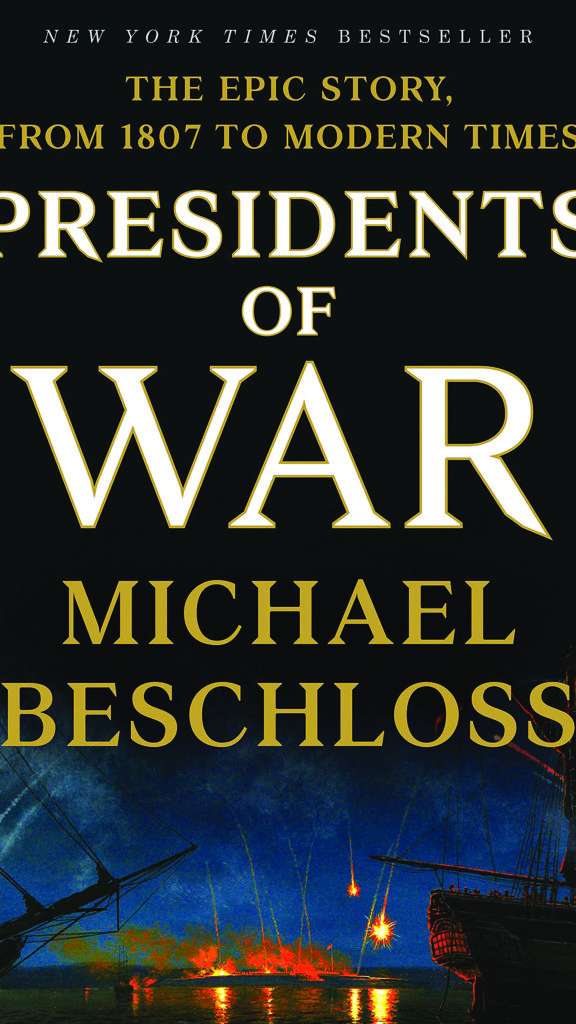
I was gifted Michael Beschloss’ The Presidents of War about a year ago and recently dug into it, interested in the book’s treatment of Lincoln. A school of thought suggests Lincoln set the bar for presidential overreach, but this book puts him in context. Overreach began with the Father of the Constitution, James Madison, when British impressments goaded him to action despite a reluctant Congress. James Polk seized Mexican territory under the guise of a just war. Twentieth-century wartime presidents also took advantage of that precedent. The author usually writes on 20th century presidents, and I thought some of those chapters were more nuanced. This book is fun to read and includes plenty of trivia in the footnotes. No Indian Wars presidents are in this book, nor are presidents who inherited wars, but Beschloss covers an admirable breadth of history.
[hr]
The Battle of the Wilderness in Myth and Memory: Reconsidering Virginia’s Most Notorious Civil War Battlefield By Adam H. Petty Louisiana State University Press, 2019, $42In the span of a single year, the Army of Northern Virginia and Army of the Potomac conducted three separate campaigns in the heavily wooded region west of Fredericksburg known as the Wilderness. In May 1863, Robert E. Lee was able to claim victory when the Army of the Potomac retreated after tactical setbacks at Salem Church and Chancellorsville, though it came at a heavy cost to his army. Later that year, George Gordon Meade’s army crossed the Rapidan River and, stymied by Confederate fortifications at Mine Run, fell back across the river, while Lee was unsuccessful in his effort to deliver a counterstroke. Finally, in May 1864, Lee’s army and Union forces fought a brutal battle in which neither side was able to claim a decisive tactical victory and ended with the armies pushing south to leave the Wilderness. It was this last engagement, the first confrontation between Ulysses S. Grant and Lee, that became known as the Battle of the Wilderness.
According to author Adam H. Petty, historians need to rethink this battle and the region in which it took place. He challenges traditional accounts of the origin of the Wilderness, arguing it was not just the product of iron mining, but also a consequence of colonial tobacco cultivation and road construction in Spotsylvania County. Petty also points out the Wilderness was neither a monolithic region in terms of vegetation and terrain nor the only Civil War battlefield of its kind, offering an interesting comparison of the Wilderness with the area in northern Georgia where the fight at Chickamauga took place to make the latter point. His second central argument is that the Wilderness did not in fact provide a tactical advantage to the Confederates. In the process of laying out and making his arguments, Petty offers analysis in the Battle of the Wilderness in Myth and Memory that scholars of the Eastern Theater will be well-served to take into account. He also adds to a growing body of scholarship in which students of environmental history have provided interesting insights into the factors that shaped military operations during the Civil War. — Ethan S. Rafuse
[hr]
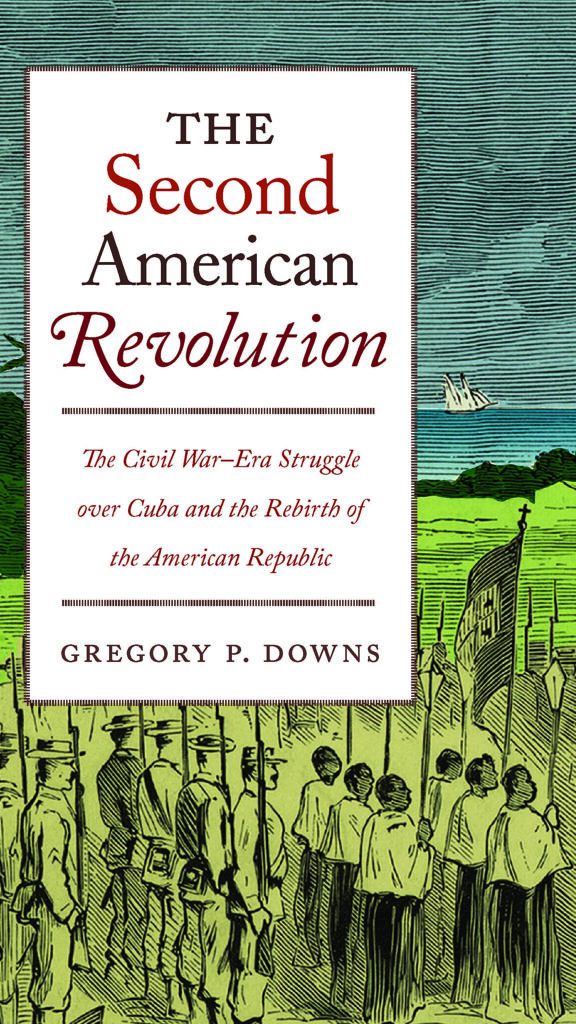
We are living in a revolutionary period,” Secretary of the Navy Gideon Wells confided to his diary in March 1867, “and the character of the government is undergoing a strain which may transform it into a different character.” Based on the evidence presented in The Second American Revolution: The Civil War–Era Struggle Over Cuba and the Rebirth of the American Republic, author Gregory P. Downs couldn’t agree more. The years between the beginning of the Civil War and the end of Reconstruction, Downs contends, “marked the fall of the First American Republic and the rise of a Second Republic founded on a Second Constitution created in a Second American Revolution.”
Downs persuasively argues that the true revolutionary magnitude of the social, cultural, and political changes experienced by America during the Civil War era have been minimized by historians, politicians, and others with a vested interest in mythologizing the conflict as “a restorative Union war, or a resolution of the Constitution’s internal contradictions, a conflict generated from within the founding moment.” Downs will have none of it. He despairs that “modern vocabularies, cultural needs, and implicit comparisons, hang like a fog over the Civil War, making it hard to see the landscape clearly.” Those willing to explore his persuasively argued insights will have those obscuring mists lifted and come away with a more expansive understanding of the war and its national and international implications.
Each of the book’s five chapters are strong enough to stand on their own, yet seamlessly integrate into a cogent vision of a world turned upside down. This is in keeping with the book’s original genesis as a series of public lectures designed to offer fresh perspectives on the Civil War era. Successfully translating lectures into a monograph often fails. Downs and UNC Press did not succumb to the pitfalls prevalent in the genre.
A good example of how Downs pushes the historical envelope can be found in his chapter about how the Civil War “was fought over the future of slavery inside and outside the United States.” Downs is among a growing cadre of historians who maintain that “The Civil War was part of a set of interconnected rebellions that spread from Cuba and Spain to the United States over the 1850s, rebellions that emerged from common struggles over the role of slavery.” Putting the war in a transatlantic perspective lessens the uniqueness of our national struggle but at the same time highlights its importance beyond our borders.
Downs’ book should be read as a primer for future investigations. There are times when some of his conclusions became more than a bit breathless as he strives to make his historical discoveries relevant to present-day realities. “Part of the burden of teaching and studying Civil War history,” Downs opines, “is the call to prepare citizens for the normality of conflict, to help them face crises as they come and with all the tools at their command.” Trying to convince an ahistorical twenty-first century citizenry that while “those tools may not be sufficient to sustain a republic, they are more resilient than amnesia, more effective than wishful thinking” may be beyond even the ability of a Cassandra as eloquent and insightful as Gregory Downs.—Gordon Berg
These reviews appeared in the June 2020 issue of Civil War Times.

